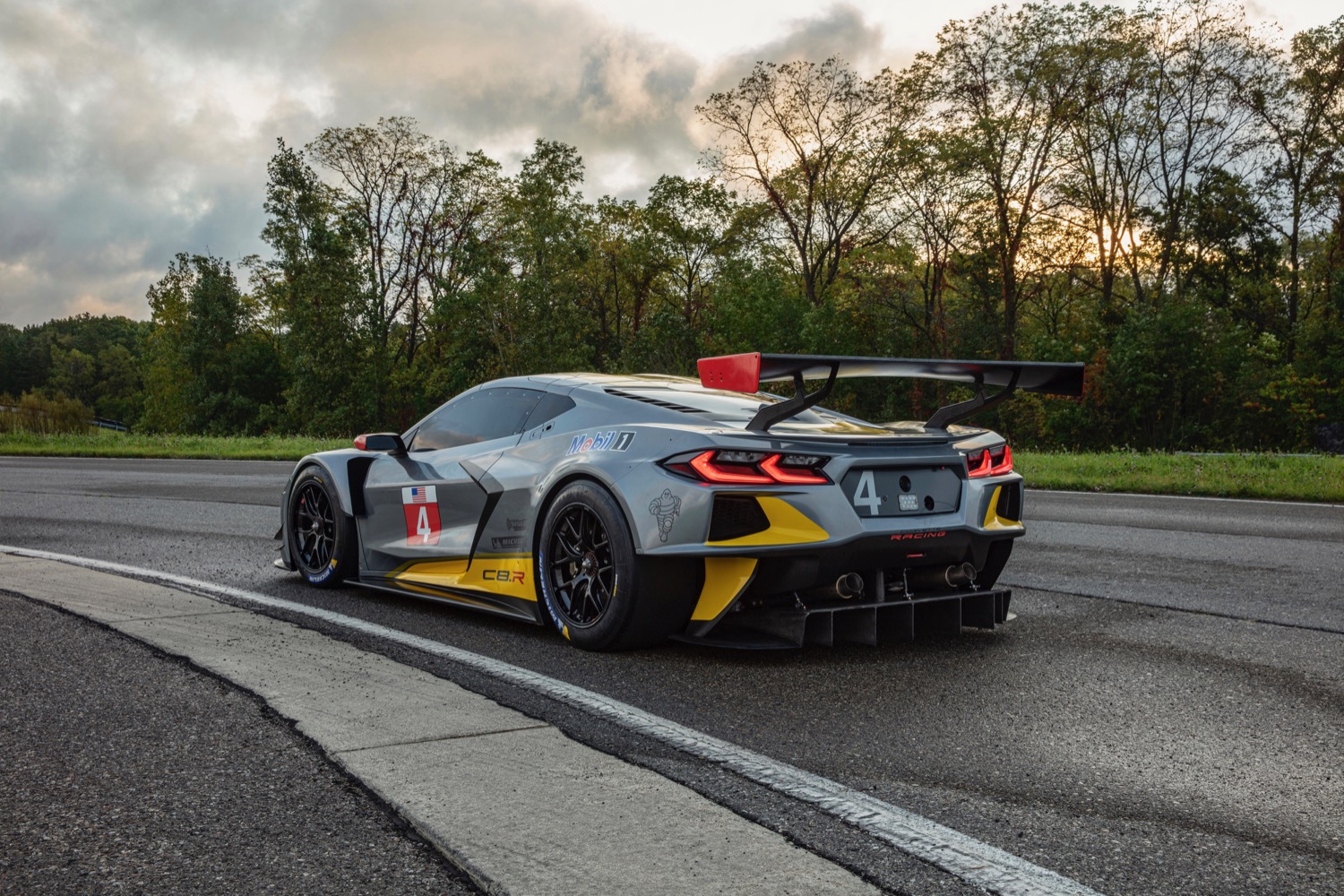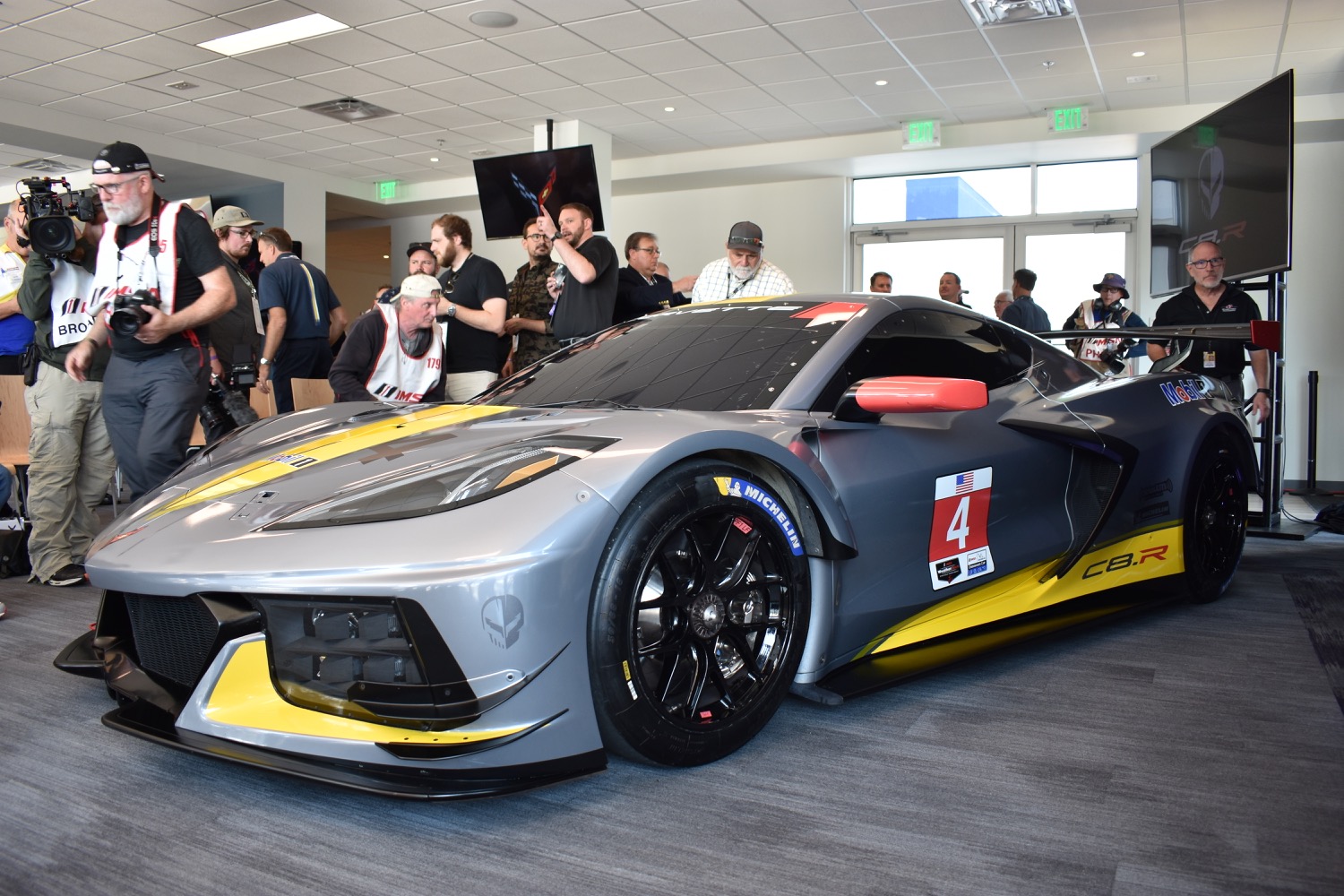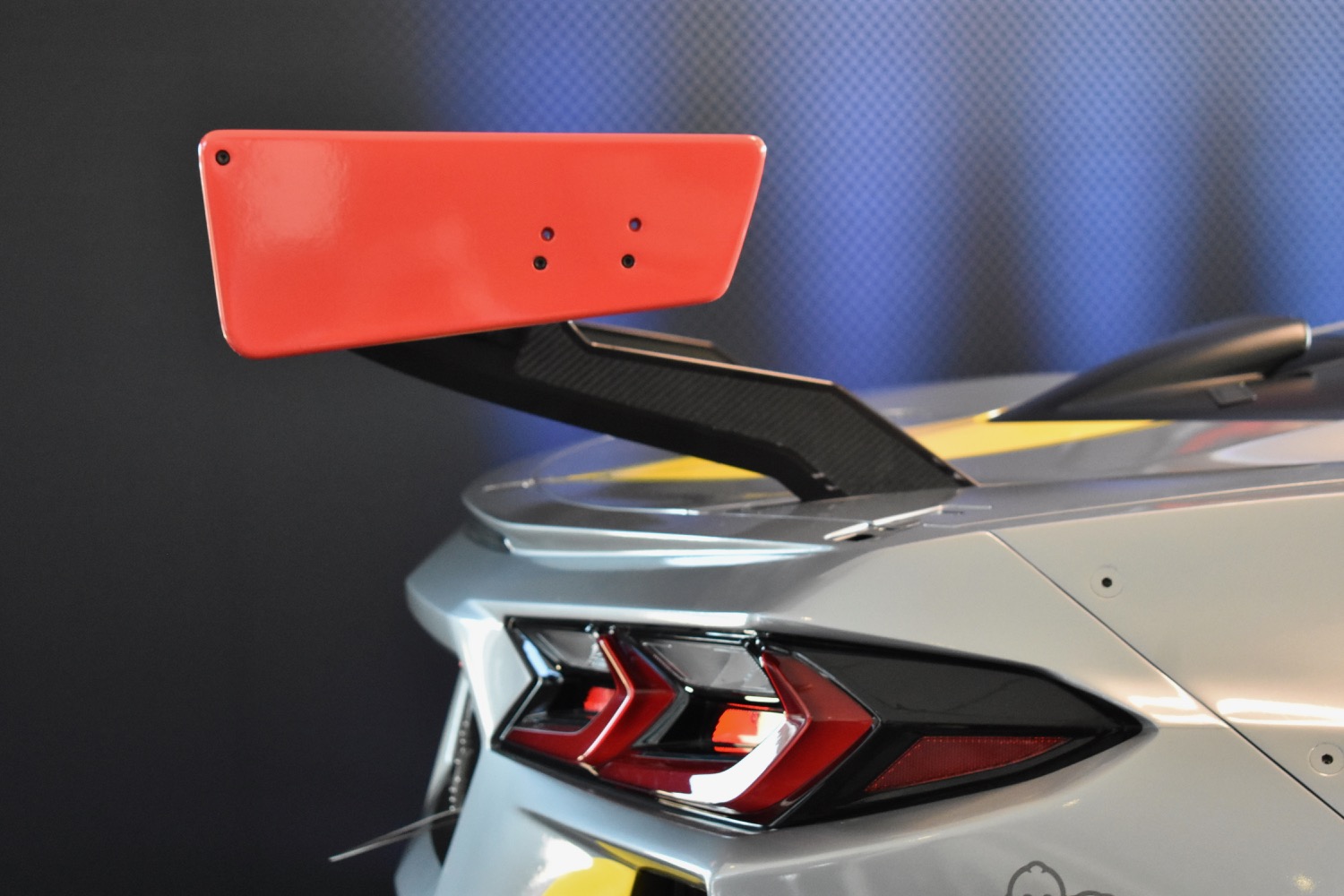The 2020 Chevrolet Corvette, aka C8, was finally revealed in July, but Chevy isn’t stopping there. The automaker is rolling out a racing version of the new Corvette, dubbed the C8.R. Digital Trends got an up-close look at the new Corvette racer, and learned how cross-pollination of technology made both the racing and road-going versions of the C8 better.
As with the current C7.R, the C8.R will race in the GTLM class of the IMSA WeatherTech SportsCar Championship. GTLM cars are based on production models, but manufacturers still have significant leeway for modifications. That can result in cars with only a superficial resemblance to their road-going counterparts, but Chevy claims that isn’t the case with the C8.R.
“The C8.R represents the closest link we’ve ever had between the racetrack and the showroom,” Mark Kent, director of motorsports for General Motors, told Digital Trends. “Because we started with a clean sheet of paper, we were able to develop both cars simultaneously.”
The basic chassis of the race car is unchanged from the road car, Ed Piatek, Corvette chief engineer, told Digital Trends. Every C8.R starts on the same Bowling Green, Kentucky, assembly line as ordinary Corvettes. The chassis is made using high-pressure, die-cast aluminum, a process in which molten aluminum is shot in molds. That provides the strength and lightness needed to make the C8.R a race winner, according to Piatek, who also believes the car’s mid-engine layout will be an advantage.
“This architecture lends itself to being a bit more stable, more competitive,” Piatek said. As with the C8 road car, the C8.R will benefit from having its engine place closer to the drive wheels. The extra weight should give the car better traction, leading to faster lap times. The cockpit is also much closer to the front of the car than in the current C7.R, giving the driver a better view, Piatek said.
“We get feedback that much faster,” Tommy Milner, a Corvette race team driver, said. “The car rotates around us.”
The team developing the Corvette road car also learned some tricks from the racing program. A simulator was crucial to perfecting the final tuning of the C8, Piatek said. The racing team also provided data expertise for things like heat transfer and car setup, he added. Simulators and real-time data are commonplace in the world of racing, but not in road-car development.
However, the C8.R isn’t just a regular Corvette with numbers taped to its sides. Up front, a radiator sits where a luggage compartment would normally be, and a massive rear spoiler and rear diffuser hand off the back end. Chevy also opted for a 5.5-liter V8 engine, instead of the 6.2-liter mill used in the road car. The racing engine makes about the same amount of power (500 horsepower, versus 495 hp for the road car), but it’s a completely different animal. Where the stock Corvette engine uses an old school pushrod design, the racing engine has dual overhead cams and a flat-plane crank, an exotic setup used by Ferrari and in the Ford Shelby GT350 Mustang. It reduces weight and allows the engine to rev more freely.
The competition will include the Porsche 911 and Ferrari 488. The Ford GT and BMW M8 also currently race in the class, but Ford and BMW may soon pull the plugs on their respective racing programs. Besides beating rivals, the C8.R has a legacy to live up to. The current Corvette racing program has been around for 20 years, with 107 race victories. Chevy claims that’s the most of any professional sports car team in North America.
The Corvette C8.R will make its racing debut at the 2020 Rolex 24 at Daytona, the 24-hour race that kicks off the IMSA season. The race car was unveiled alongside the 2020 Corvette convertible, which gets a folding hardtop roof for the first time.
Updated on October 11, 2019: Added details and photos.























